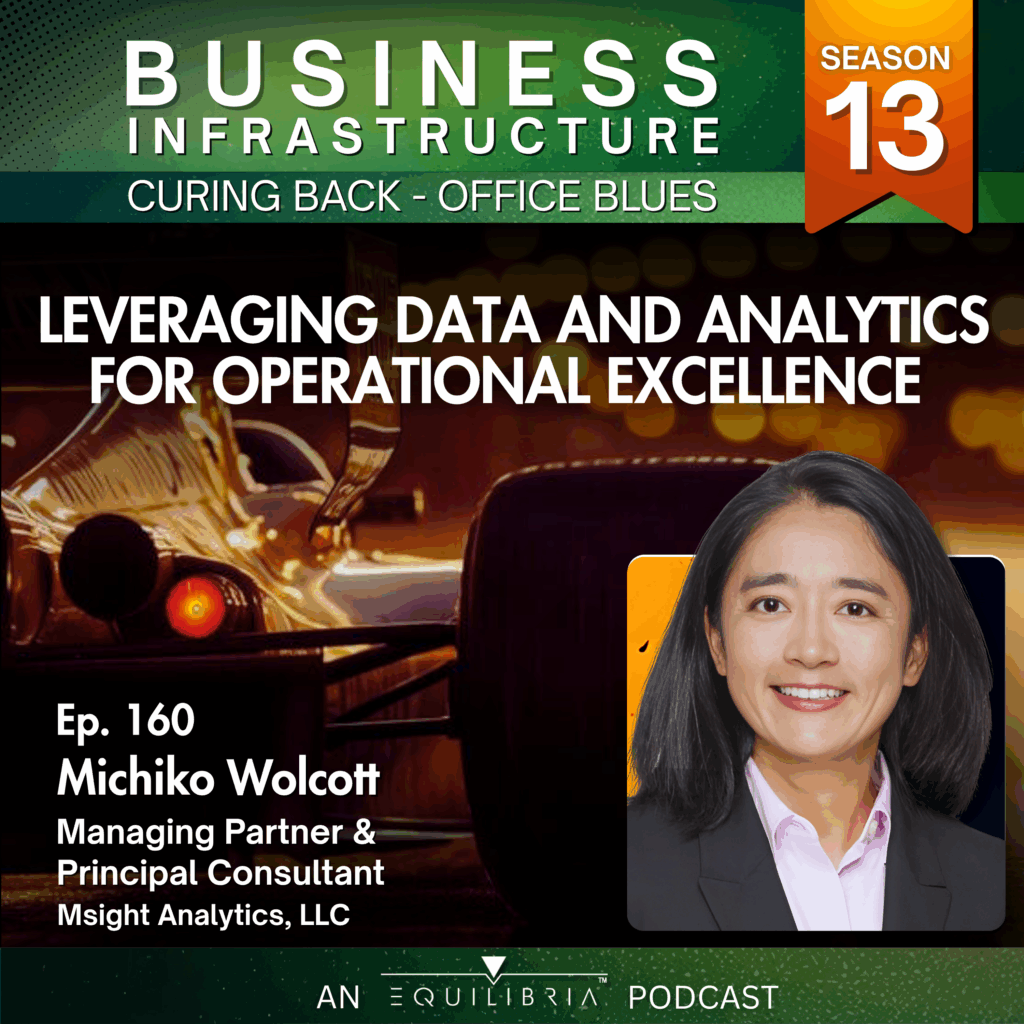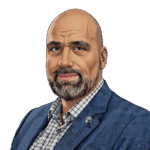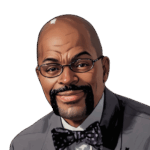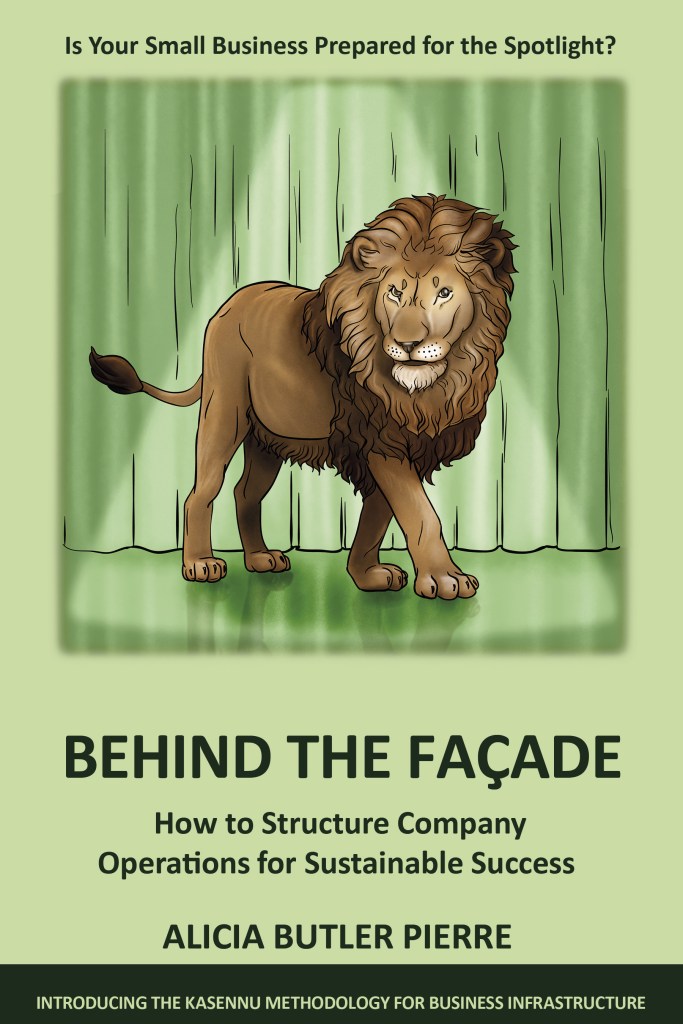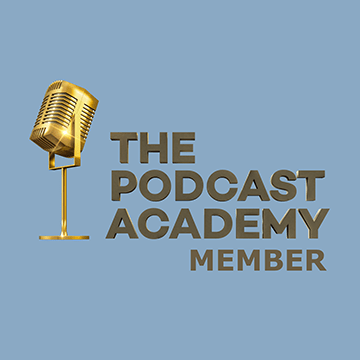Transcript
As leaders and business owners, we’re faced with all types of decisions daily. Sometimes we might rely on experience, instinct or intuition to make certain decisions. And at other times, we need data, good, reliable data to back our decisions. Hi, I’m Alicia Butler Pierre. And if you think your business is too small to have data, or analytics for that matter, then think again.
Whether you’re collecting names and email addresses, or credit card numbers and medical records, it’s all considered data. And it must be protected, analyzed and used correctly to meet operational targets. That’s why the way and the type of data you collect is so important. Think of it as a gateway to innovation, operational excellence and continuous improvement. So you have to get it right, otherwise you can lose money, not to mention your reputation.
As the saying goes, garbage in, garbage out. This is season 13, episode 160. Let’s start the show welcome to Business Infrastructure, the podcast about curing back office blues of fast growing businesses. If you’re a business owner or operator looking for practical tips and solutions to scaling your business in a sustainable manner, you’re in the right place. Now, here’s your hostess, Alicia Butler Pierre.
Finding your new favorite podcast is hard. Finding one that can help you scale your business is even harder. That’s why they launched the HubSpot podcast network. It includes shows like Martech with Ben Shapiro, a podcast that shares stories of world class marketers who use technology to generate growth, scale their business and achieve career success. You know the saying, you can’t make all mistakes by yourself.
That’s what I love about the Martech podcast. Ben’s guests describe mistakes they’ve made so that you don’t have to. Whatever your role or goal, HubSpot Podcast Network has the podcast for you. Listen, learn and grow. [email protected] podcastnetwork having a tough time trying to explain ideas over a video conference.
Try the Think Smart Whiteboard. It’s the fastest whiteboard software in the world and allows you to upload flowcharts and write on them while your colleagues are watching remotely. Call us today for a free demo. The number is 1-866-584-6804 or visit us online at getmytablet.com now that’s smart. Think smart.
This is season 13 where we’re focusing on operational excellence, what it is and how to achieve it. Joining us today in Clearwater, Florida is another special guest, Michiko Wolcott. She’s the founder and CEO of MSight analytics, where one of their service offerings is in developing business processes for data analytics and innovation in case you’re wondering what analytics is and how it can be leveraged for even small businesses, then you’re in luck. Not only will Michiko Give us the 411 on data and analytics, but she’s also going to share an example of how she used both to help a client achieve operational excellence. Michiko, welcome. How are you today?
Great, thank you. Thanks for having me. It’s. I’m honored to be here.
And I realize I still said Michiko instead of Michiko, so I apologize for that.
No problem.
As we were discussing before we actually started this recording, I have a younger cousin with the same name, and it’s pronounced a little bit differently. But please bear with me, and please correct me if I continue to make that mistake. So the way we were introduced was through one of my mentors, Essie Escobedo. She was kind enough to introduce us to each other, and I’m so glad that she did, because what stood out for me immediately as I started doing some background research on you is not only are you multilingual, but you’re also fluent in what I call the two truly universal languages, music and math.
Oh, man. Yeah, we’re gonna go there.
We’re gonna go there first.
Okay. There’s a whole background story that gets to that, but I’ll kind of let you give me your impression or your commentary around that first. Oh, okay, sure.
Well, you know, I was. I was just going to simply say, you know, years ago, I remember having a conversation with a financial planner, and he mentioned to me that on weekends he played in a band, and he was just kind of going on and on. And I said, you know, that’s so interesting because I’ve noticed most financial planners that I know play some type of musical instrument And I said, I wonder if there’s some type of a connection between the two. And he said, well, music is mathematical. And that always stuck with me. And I said, I wonder if there’s some type of a connection between the two. And he said, well, music is mathematical. And that always stuck with me.
So I’m wondering, Michiko, how did your passion for math and music lead you from working at companies like Equilibria, Inc. and North Highland to eventually starting your own business?
So this is, I think, where I have to even start from my childhood. So you’re going to have to play.
No, no, please do. Because the backstories are always so important.

I was born and I grew up in Japan. And so this is where it gets. Starts to get a little bit interesting. When I was in junior high, we moved to Dothan, Alabama, one of those corporate transfers.
I spoke no English. That’s where I learned English, right? So I have lots of funny stories just on that. But, you know, I’d taken piano lessons from very young age, and, you know, that sort of became the universal language when I was learning English. Of course, you know, whether that’s actually English or not, it’s to be questioned.
But anyways, so then I went on to learn, like, English, and then I ended up getting multiple degrees in music later. And along the line, when I actually got to all that dissertation in a doctor of program piano performance, I had this giant epiphany. I decided that that’s really not what I wanted to do, and I sort of enrolled in master’s program in statistics. I’d been taking math on and off here and there, so it wasn’t like a huge switch, but it was a big shift in the sense that I was almost done with this doctoral degree, and. And I decided that, hey, this is not quite it.
So. So after I was done, you know, got my master’s degree in statistics, and then I went and, you know, worked for Equilibria, Inc. eventually and ended up running lots of analytics projects for their Latin American clients. So, you know, my question to a lot of people is, like, you know, how many people do, you know who grew up in Japan, learned English in Dothan, Alabama, got a doctorate in music, and working in Latin American projects from us? Right. It’s like my resume, like, reads like conversational P. It’s just so funny.
It does give me, you know, really broad perspective as far as the kind of connection between the music and math is concerned. It’s. It’s. Yes, one is. There’s I think it goes both ways. There’s a lot of things, you know, a lot of things in common between music and math. Math is music, and music is math. But also, there’s a lot that are not in common. And, you know, I tend to see, like, the extreme cases where one is, you know, really good in both or one is really good in one and really, you know, not comfortable with the other.
So I think it sort of depends on the perspective a little bit. Wow. So, you know, and for those listening, I’m sure they’re blown away, as I was when I first learned about. Again, as you mentioned, the first of all, you’re fluent in. Let’s see.
It’s Japan, you know, Japanese, obviously, English, Spanish and Portuguese. So I’m assuming the Spanish and the Portuguese came as a result of the work you were doing in Latin America. Yeah. Is that how that came about? Yeah. I just don’t like not understanding. So I asked if I could. When I was working there, I asked if I could take an hour, check out. Back then it was cassettes, Right. So check out cassette.
A set of cassettes and listen to it during my lunch hour. And so I had to get permission to do that, too. I think there was a checkout process, but that’s how I learned Spanish and then eventually sort of understood. And once I had Spanish, then Portuguese became a little bit easier. It’s like once you learn one language, then, you know, the next one becomes easier and next one becomes a little bit easier. But, yeah, it all started with me learning English in Dothan, Alabama.
And I’m sure there was just just a little bit of culture shock, right?
Just a little. You know, it’s. You kind of take it in stride, right. When you’re 15, you just kind of. It sort of is what it is. And, you know, back then, I. The only conversation I could hold was, it’s hot.
That’s hilarious. Okay, so, yes, you know, you’re 15 years old. You and your family immigrate to America in a small town in Alabama, of all places. You’re learning English. You always play the piano. You then go to college. So you start working at Equilibria, Inc., and as you said, it gave you exposure to working in countries throughout Latin America. You eventually master Spanish and Portuguese as well. How did you eventually come to start your own consulting firm?
That’s hilarious. Okay, so, yes, you know, you’re 15 years old. You and your family immigrate to America in a small town in Alabama, of all places. You’re learning English. You always play the piano. You then go to college. So you start working at Equilibria, Inc., and as you said, it gave you exposure to working in countries throughout Latin America. You eventually master Spanish and Portuguese as well. How did you eventually come to start your own consulting firm?
So as a result of working a lot in Latin American projects and beyond, I eventually ended up leading analytics for the international business for Equilibria, Inc.. And a lot of my initiatives had to do with not reinventing the wheel between different countries, especially in production and delivery. So, you know, from my perspective, delivery, you know, because this is about operations, right.
My perspective is like, delivery is operations, and that happens even in consulting and data engagements. Now, I never formally studied operations or process methodologies, but my dad was an engineer in Japanese manufacturing, of course, you know, and he used to. Yep. So, you know, when he worked in quality, he used to say, like, you know, my job is, you know, going around to my customers and apologizing for bad products. So, you know, that was perfect Japanese stereotype. But then processing quality and productivity is almost like in my genes now with all this, you know, different interests and having, you know, run a practice in an organization and in analytics and data, my Interest and passion and kind of focus my consulting practice became.
How do you become effective in data and analytics? And how do you operationalize data and analytics? And there’s so much focus on doing data and doing analytics that nobody’s really thinking about, how do you, what are the elements that make it successful? From my perspective, it kind of goes both ways. So like we’re talking about data analysts and technology versus operations, or any other business for that matter. I see them as mutual stakeholders. There’s data analytics and technologies to improve business operations. And there’s other aspects, there’s operational aspects to data analytics and technology.
Yes, there is such thing as IT operations, there is such thing as data operation, et cetera. I’m really into mixing, cross pollinating, different things. I think there’s a big opportunity, particularly because there’s so much emphasis on doing. Yet somehow 60 to 70% of data analytics, whatever initiative in the market fail, they don’t achieve expectations.
You kind of think about, well, why is that? And it’s been like that for over a decade. It’s been like that for a long time. So there’s something that we apparently continue to do not well. And that was the motivation for me to kind of get into this whole idea of not so much doing data and analytics, but how do you make it work?
You know, as I’m listening to you, I’m wondering if part of a root cause to what you’ve just described is in the terms data and analytics in and of itself, do you find that most of the people that you work with, your clients, they don’t have a fundamental understanding of what that is? Because I’ll be honest with you, as I was reading over a lot of your, your content online, I was thinking, well, I thought data and analytics were kind of the same thing. Is there a difference between the two? And if so, what is that difference?
Well, if we were to talk about just the information in general, right there, it’s kind of like the raw material, which I would think of data from my perspective. Again, I’m talking about kind of my perspective. Right. But then there’s raw material. And analytics is a little bit like, okay, how do you then make the raw material into something that you can actually consume? So like, you know, I like the cookie analogy all the time where you have, you know, you got the flour and you got the recipe and then you got, you know, the appliances, which are kind of like technology in a sense, right? So, and out comes insights or cookies and people consume it. So then there, there are kind of Infrastructure that kind of need to happen for all that to take place.
Part of the challenge though is that, you know, well beyond the terminology and beyond the understanding of how it all operates, Data, analytics and technology, there’s so much we get so trapped in the idea of data. We get so trapped in the idea of digitization, technology tool, those kind of things. But data at the end of the day, and I mean data in sense of information, something that actually use to do something. But data really is not about data, right? That’s kind of a weird thing to say, but it’s not about data. It’s rather, rather about how you approach a problem. So you know, a lot of the questions that I get like from small and medium businesses particularly, it’s like, well, how relevant is analytics or AI, et cetera, right?
I’m too small to do this. How useful is it for me it’s like forget all that, right? It really applies at any level or even individuals because it’s really about how you approach a problem. It just so happens that data and analytics and technology are tools. A lot of times we start with data, we start with analytics, we start with technology and do the whole hammer nail thing, right? Just stop talking about data. It’s actually interesting a lot.
When I do strategic visioning with some of my clients on data and analytics, I do this kind of facilitator exercise, right? And I tell them, you know, tell me what your articulate your vision is, what you’re, what you’re trying to accomplish, you know, what are your goal is. But you cannot use the word data, analytics, information, you know, technology, machine learning, none of that. And people have a really hard time articulating what is it trying to do because there’s so much focus on data and analytics.
It’s kind of like, okay, it’s a shiny thing, everybody else is doing it. I need to. It’s sometimes really hard to get people to step back and focus on what problem is it that you want to make go away or what do you need to know in order to make that problem go away.
I of all people who grew up as data and analytics practitioner, tell people to step away. Don’t think about data, don’t think about analytics, don’t think about technology, but work on articulating what it is that you want accomplished.
Yes. You know, this is, this. I’m so glad you mentioned that because it’s such a great segue to what I wanted to ask you next. And you know, this kind of, this next question centers around you know, the fact that there, there’s this conundrum in your industry, Right. Because while data professionals like data scientists, artificial intelligence engineers, and data analysts, they’re in high demand. But to your point, and this is something that I read on your website, the quote, unquote, the ideals of data and analytics maturity are too abstract and challenging to implement.
So it sounds like you’re really kind of, I don’t want to use the term dumbing it down, but you’re really forcing them to think. And this is something that a previous guest, a couple of episodes back, Carol Sanford, talked about is literally think, what is it that you’re trying to use data to solve?
Right, Absolutely.
Yeah. So I love that you’re forcing your clients to get to the basics because sometimes it is easy to just kind of use these buzzwords as a mask or a shield to make it seem like one, that you’re really smart and you know what you’re talking about because you can use these big words in a sentence. Or secondly, it could just be that it’s a, well, again, a mask for disguising the fact that you really can’t articulate what’s going on and what it is that you’re, that you want to improve.
So, you know, I’m also wondering, and this might be a slight diversion from, you know, what we’ve been talking about so far, but I’m also wondering is the fact that people at the end of the day can’t quite articulate what it is that they’re trying to do yet alone the problem that they may be trying to solve is that part of the reason why we’re seeing this increase or why so many companies are being caught off guard with these cybersecurity attacks. I don’t know if that has anything to do with the type of work that you do, but it’s just something that I’m curious about and I’d love to hear your take on it.
So I am not a cybersecurity or kind of IT security experts, but I think if we were to kind of take a step back and look at a broader picture. Right. We’re so, and I said this before, but we’re so caught up in sort of like the details and checkboxes and doing this, that and the other things, and we’re not stopping to think about, okay, what it is that we need to do, what are our obligations, what are we trying to accomplish Right.
And I think it’s really important that we don’t gets fixated on tool and which Include technology and data and analytics, among other things. I think we need to almost look inwardly and figure out, okay, what it is that we want. But at the same time, you know, looking inward as an individual is one thing, but you also need, as an organization or as a business, you need some sort of system to operate in Right.
And it’s a hard sell a lot of times because there’s so much focus on doing analytics and on a technology side of things and the tools and so forth. But in a sense, we kind of need to detect the tech a little bit. Right. Not to get back to the cliche, but there’s people first and then process and then maybe technology. We technology and data and analytics practitioners always start from technology. That’s what we know.
Yes.
And there’s a Dilbert comic strip that I absolutely love. Of course, he’s a software engineer and it says he’s doing root cause analysis. And he says, I found the root of the problem. It’s people. They are buggy. It’s a perfect, you know, it’s a perfect explanation that sort of is. And then, you know, so one of the things that I do is kind of look at stakeholders. You know, who are your stakeholders? Make sure you know who they are. Make sure you know your people. Right. And there’s a lot more of them than you think and involve everybody. They need to be.
They all need to be kind of part of things, but in. Not to, you know, divergent from the diversion itself. But I’m a big, you know, kind of fan of lean as a philosophy and a paradigm. It sort of sets your mind and, you know, put your mind in a particular framework where. Yeah. Then you can implement other techniques and other, you know, methods to sort of solve for that problem. But it starts with, you know, the frame of mind. Right. And so I really like lean as a philosophy, and I’ll, you know, mention it.
I’ll come back to that in a little bit. But I think it’s important. And so it’s based on all that that I kind of have this idea of, well, you have to have kind of an organizational system. Right. To make data and analytics happen.
And it’s like anything else, but I tend to call them, you know, organizational infrastructures, but those are the enablers of people. I mean, we talk about a lot about integration in the technology sense, but we need integration among humans, Right?
Yes.
I’m not talking about. I don’t mean that in terms. In sense of assimilation. That’s not what I mean.
So speaking of this organizational infrastructure that you referenced and the need for having these systems that do integrate the people and the processes and the technology, what in your opinion does operational excellence mean?
So, you know, people want to do well in general, I don’t think people come to work, and this has been said by other people as well, but people don’t come to work wanting to do a bad job. So there is a need for an organizational system. And again, you know, the infrastructure that nurtures excellence, again, bad system will beat a good person every time. Is the organization designed to do well. And more importantly, if you systematize and if you actually have a good infrastructure, then you can measure better.
So I look at organizational excellence as a program, as a system that enables people to do well. There’s a desire on one hand by the people we need to enable them to act on and actually realize those desires. I had a client that ended up establishing the Office of Operational Excellence.
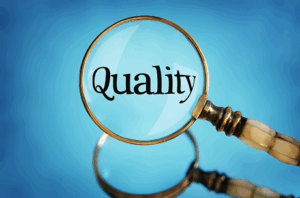
It used to be like, I think they called it quality, but they never quite defined what quality was. It was very hard to accomplish any goals or anything like that because they couldn’t define goals. They didn’t know what quality was. But then that sort of became a turning point for things to become. Get better and sort of transform.
I say transform in quotes, with air quotes, because it was. That’s what happened. Sort of in retrospect, they didn’t kind of set out to transform, but yeah, that was, I think, one of the key sort of realization that they did that. Okay, we can, you know, operationally be excellent and do that in a systematic, programmatic way.
Yes, yes, absolutely. And Michiko, earlier I mentioned or referenced an operational excellence success story that with one of your multinational clients. And I can’t wait for you to tell us all about that. But first, let’s take a quick break to hear from our sponsors. In order to build a successful company, you need to create a remarkable customer experience. And to create remarkable customer experiences, your teams need fast and accurate insights and to make decisions.
That’s why HubSpot created a CRM platform with powerful and easy to use reporting tools. It helps you empower your go to market teams with the data driven perspective they need to make smart decisions. Keep your data up to date by syncing all apps and systems in one user friendly package.
Enjoy the flexibility HubSpot offers by turning custom property data into reports. And align your team with a single source of truth, giving them access to powerful rebuilt dashboards that help prove the impact of campaigns, provide intuitive sales and coaching insights and highlight clear business performance metrics. Learn [email protected] we’re back. And before we take a deep dive into your example, Michiko, I’d like to set the context in which we’ll talk about it.
So it will be from a business infrastructure perspective. And I know we’re throwing around all of these terms, right? You say organizational infrastructure, I say business infrastructure, but we’re really, really talking about the same thing. Now for those of you who might be listening to this show for the first time, business infrastructure is an operations system for linking people, processes and tools and technologies to ensure that growth happens in a profitable and sustainable way.
Now, every project manager, anyone who has ever had to manage a project, there are two constraints or requirements that you must meet. Budget and time. And it sounds like Michiko, you worked with a client that consistently had difficulty completing projects on time. Can you describe what was going on with that particular client without divulging maybe any proprietary information?
Sure So this particular client was. It’s. They were in the information services space. So data analysts and technology was their business. That’s what they did. Right. So the operations, everything, that was their business. So I was brought in to help them to do kind of a strategic alignment and help them improve how they delivered. Again, kind of going back to my earlier point, from our perspective, delivery is operations. And so they’ve had this, always had this startup mentality.
They started small and they kind of grew up into what they are today. But they were operationally, they were still doing a lot by kind of this making it happen, you know, brute force type attitude, I guess. And they made a lot happen just by brute force. Very formidable, quite honestly. But the organizational infrastructure or business infrastructure, right, did not keep up with that growth. And so when I started with them first, for one of the first thing I did, they got the, all the, the senior executives and I told him to go read the first couple chapters of Lean Thinking by Womack and Jones. And so he gave him a couple ways. They came back and so we met and they’re like, okay, this is talking about us, right?
So it’s like it spoke to me. I mean, I felt like they were talking to me. And so, you know, it’s the realization of you can. This is a perfect example of, yeah, people can. You know, you can have a lot of good people, but if you don’t have the support structure behind it, then you’re just not going to do too well. The second thing that I did after that, we did after that was really they needed to talk to each other.
So it’s one of those funny things. People do not talk to each other. I’m like, why not? You’re right next to them. Why don’t you talk to each other? But they don’t. Right. In this particular case, it was even funnier almost in retrospect, because, you know, they were so focused on doing their own job well that they were all kind of suffering in silence. And so I had. They didn’t know how to talk to each other. They had to facilitate the whole process. Like, okay, now, oh, I can go talk to these people. I was like, yes, you work with them. And it’s like, they don’t. They didn’t know who they worked with because they were all in silence. So once then they got into the comfortable with the idea of, hey, I can talk to people. Then we sat down and actually mapped out a process almost postmortem Right?
So it looked at a case study. And then when we did that, there was a whole bunch of task boxes that didn’t connect any. I mean, there’s like literally totally orphaned task boxes. I was like, what is this doing? And then there were arrows going everywhere in circles. And so. But then once they got an understanding and they got their own context, they were like, okay, hey, we could do things differently. Right? And then so after all this, basically what happens was what used to be project overruns of 24 months or more beyond the original stated goal and hardly, you know, not completing a whole bunch of their projects to. They’re currently meeting 80% of their goals. So you might think of, well, that’s 20% that’s still not met. But remember again, 70% of data and analytics and technology initiative fail. So 20% is pretty good Right?
So this is one of those kind of growth story that they’ve gone through. And so this in retrospect ended up being a transformation. But this was one of those things where yet data and analyst was kind of in the center, but there was an operational wrapper around it and it Sort of ended up becoming a really feel good, really good success story where they operate in a way today that just don’t look like anything that they were a few years ago.
So there’s a lot that I have questions about. One of them being. You mentioned mapping out a post mortem process. Now I’ve heard of the pre mortem exercise and we’ll make sure we have a link to. There’s a Harvard Business Review article that does a really good job of explaining a pre mortem exercise. But what is a postmortem and what exactly was the process? Was the process their actual project delivery process, their service delivery process? What process were you all actually looking at or mapping out?
So they had internal projects as well as external projects. So in external projects basically being serviced directly to clients or customers. So we picked multiple processes. One was internal and one, at least several was external. Okay, but basically it’s nothing more than okay, we did this project. You know, let’s see what happened. Right. So it’s a, it’s a case study. So I call them postmortem. But it’s because it’s, it, it’s afterwards. And it’s afterwards of something that didn’t quite run well. But that said, let’s look at a case study.
What worked? What didn’t work? Well, there was a lot more that didn’t work. That did work, but that was kind of realized. Until that point, nobody had looked at how anything was connected to anything. And so again, it’s, you know, we don’t live in isolation. We are people and we’re connected. And everything you do has an input and an output and there’s, which means that everything you do, you are a customer to somebody and then you have a customer in somebody else because somebody’s receiving that output.
And it’s the realization of this whole thing that said, hey, you know, we are all kind of doing in a way that it’s not helping anybody else. That was an interesting and really kind of satisfying transformation to watch go through because people, the, how people kind of behave in an organization change because of their desire to do well.
So when they initially reached out to you, was it because they said, were they using those, those traditional big words, we have this data issue or we want to take a look at our analytics, or did they just state very matter of fact, We were having difficulty delivering our projects both internally and externally on time?

Well, it was kind of secondary. They kind of reached out to me because I knew their industry and they’re like, we need some help. So it was a really bit more of like, well, let us, you know, can you help us kind of align, you know, strategically and, you know, visions and things like that. But there was a lot, So that kind of sounds good at the, at the very high level, right. But then there was a lot that was going on underneath that wasn’t going to make that happen.
Then you have to kind of look at okay, in order to do that, you have to do this. And then in order to even define where you want to be, then you kind of had to take a step back and say, okay, what does it mean? And how does that relate to what we’re doing today? And so this. It wasn’t explicit that way, but it had to happen. It’s one of those things that had to happen that way.
Now, if we think about that people component that we’ve been talking about, whether we reference it as organizational infrastructure or business infrastructure. I know earlier you mentioned the importance of identifying who the stakeholders are. Can you talk to us a little bit more about, you know, who were you getting together in the room? Was it purely executives? Was it a cross section of people that work at different levels within the company?
So It sort of started with the executive people because they are the ones who said, hey, I need help. So from a project kickoff perspective, I knew that they were the people first, people that talked about to. But it’s everybody, right? Grassroots, bottom. At the end of the day, there are people who make the day to day happen and they need to work with each other and they need to understand who they’re working with and who they’re a customer to and who their customers are. And I mean customers in a sense that somebody who, you know, receives information or receives the result of what you’re doing, not necessarily internal or external customers in a more traditional sense, but we are all connected.
We’re all networked. We talk about network in a more social sense, I think, but beyond the technology, we’re connected to people and we like to. A lot of times we kind of assume that we are in the back and we are isolated and we don’t see people, but that’s not true. There’s always somebody on the other end or at the end of your process. Right. And so it’s important to realize that you’re connected to at least to the end person and there are probably several other people that are connected in between and how you’re adding value to that end person and how each little component in between are, you know, is adding value to the end product, to the end customer.
And that’s another reason why, you know, I like kind of like Lean as a philosophy, because you’re adding value or maybe you’re not adding value. And just kind of thinking through, okay, how am I adding value to the end product or end person or a really client or a customer and who all are adding what value to that value chain or value network?
What are some of the tools that you’re using? So I know you referenced there’s obviously the Lean framework, which I wish I could just have a conversation with you just on all of the Japanese words that we use like gemba and kaizen and all of these kanban, all of those words I love it.
So the fact that you can speak firsthand from these principles and philosophies, considering the fact that your father had a very strong background in manufacturing and sounds like he definitely used that Lean approach that comes out of Toyota. Right. So I’m wondering, what other tools were you using? You mentioned process maps. So are you mapping things out in Microsoft Visio or do you have another mapping tool that you prefer or recommend?
I’m old school when it comes to most anything, so no, I use Visio or I think some people I’ve used what is it lucid chart with some other people. But it depends on, you know, what it is that they have or they’re comfortable with. And at the end of the day it’s like, let’s just tool.
I mean we were just sitting there literally on whiteboarding with a whiteboard, with a marker. Okay, this happens here. Doesn’t know it doesn’t. Is erasing here. And then let’s move this over here and. But then it was really all, you know, just kind of really old school. Yeah, Tools to me are secondary. And yes, there are some easier tools out there, I think, but it’s more important to make it happen. It’s more important to actually do it and not worry too much about what tool I’m going to use. At least that’s sort of the way I look at it.
And I’m also curious with the way that you work with your clients. Are you. Do you break up the work or do you encourage your clients in this case in particular, since they had difficulty delivering projects on time, did you find that they use more traditional project management approach of the waterfall approach versus doing things in short sprints using that Scrum or Agile approach?
You have to start somewhere. Right. So when you don’t have any process at all, you have the waterfall is a pretty easy place to start. I mean just to understand, sort of get, establish a baseline that’s not where they ended up. They are a lot more in a kind of agile scrum, the type scenario and they’re going in sprints of X number of weeks and so forth. So that’s where they ended up. And I think that’s a natural progression.
But if you’re not used to thinking about processes at all, sometimes agile can be a little bit overwhelming. And so take a step back and say, okay, here’s traditionally processes tended to work and at least understand, get that process thinking mindset and get, understand how everything is connected and then sort of like break it down into smaller pieces because then you can look at the totality of agile multiple sprints as a giant project.
They’re just broken up the sprints. It’s worked well, at least for the clients that I’ve worked with, particularly when they don’t have, when they’re not really super process mind oriented. So it’s a good starting point. It’s like, you know, you start with the classics and then you kind of evolve into a little bit more, more modern and it gives you a better appreciation, I think of why you’re doing the way you’re doing when you use more modern approaches.
Yeah, yeah. So, so speaking again of I guess, tools and technologies that you may use for those who are listening right now, are there additional resources that you would recommend? Michiko for people who might be listening, thinking, wow, I definitely want to learn more about all of this and data and analytics and Lean. I know you mentioned the book Lean Thinking but are there any other resources that you can recommend?
So again, going back to, I’m really old school so some of the new books are great, but going back to kind of like what are the fundamentals? Right. And so out of Crisis, out of the Crisis by Deming. And that’s where he, that is where the version of the 14 principles of management was first in a book. And out of any number of things. Right. Those points just continue to be true. And I just like the whole idea of systems thinking and kind of managing in systems and letting the people be who they are. And so I think that’s a really good foundation, let’s say for setting all of the framework and the mindset and not to get a little bit, you know, even too common sense or maybe even cliche, but I am actually a big fan of 7 Habits of Highly Effective People by Stephen Covey.
And yes, it’s common sense and it’s a little bit more written from an individual personal level, but it does extend extend to organizations and for whatever it’s worth, Lean Thinking out of the Crisis and seven Habits for anybody that I’m working any practitioner data and analytics and technology practitioner that I’m working with, I consider that to be required reading.
Excellent. Now I noticed that you also have some publications I was looking at your LinkedIn profile. Are there any of these that you think would be a really good read for people who just want to know more about analytics in general and just so they can maybe even educate themselves on how to find people like you to help them leverage data and analytics in solving particular challenges that they may be experiencing within their operations?
I tend to write a lot of small things. In fact, I think one of my kind of goals for the year is to have a whole bunch of pithy one liners on Twitter about, you know, data and analytics. So kind of like fortune cookies, right? But beyond that, you know, a lot of my writings tend to be in kind of white papers and blogs and things like that. And of course I have some materials and videos and even coaching and workshop around like, you know, how do you.
What are the fundamentals of you know, becoming insight oriented as an organization or as a, as a business, as a practice? What are the requirements where does again organizational or business infrastructure for data and analytics and then some non technical topics. Right. One of the things that I think is important that we don’t do enough of is that the practitioners, we need to educate the practitioners to be more human in a sense and how to work with other humans.
Because a lot of times we’re so enamored with this whole technology thing that we forget that there’s a human. We are human. And so in some ways, yes, I’m getting a little away from doing and actually being on the technical side of data and analytics. But it’s sort of still maintain that it’s the human. People make it happen. Right. People make it reality. And so let’s understand how people work and how to adjust or how to fit the framework with the people in order to make data and analytics happen. So those are kind of the topics that I try to address in a lot of my materials.
I must say it’s very refreshing to hear a techie speak so much on the importance of focusing on the people and to your point, educating the practitioners of data and whether it’s data science, data analytics, AI, machine learning, all of those things, educating them on just how to be more human. Because a lot of times we can, I think, get caught up even within these frameworks, which is something else that I love about your approach, is that, you know, these different frameworks, but it’s really about figuring out what are the best. Where can I draw the best pieces from all of these different frameworks and all of these, you know, insights and principles from these, even from the different books that you mentioned, to craft a solution that’s going to work best for a particular client.
Absolutely.
Not being so rigid, right? Not being so.
Yeah.
In the delivery of that.
Yeah, I’m a big fan of the 80. Oh, actually I’m a complete abuser of the 8020 rule. And I’m sure, you know, Pareto’s probably rolling over, but, you know, it’s that there’s a fine line between I am very different from everybody else and I have a lot in common with everybody else. I think a lot of times what happens is that, you know, we kind of start from the point of, you know, how we’re different.
We start from the point of disconnect. Right. And forget that we have a lot in common. And so even a lot of these other, you know, these books, be it Lean or, you know, whatever else, at the bottom, you know, at the very bottom of it, it’s. There’s a lot in common.
And there are different implementations, the implementations are different. And so it’s that implementation that you have to adjust a little bit to make it fit for you. But at the end of the day, it kind of has to all come back to, okay, what is the. What’s at the bottom? What’s, you know, the fundamentals, the basics never go out of style.
And there are different implementations, the implementations are different. And so it’s that implementation that you have to adjust a little bit to make it fit for you. But at the end of the day, it kind of has to all come back to, okay, what is the. What’s at the bottom? What’s, you know, the fundamentals, the basics never go out of style.
I’m relatively easy to find. There’s not a whole lot of people named Michiko Wolcott. I’m relatively easy to find, but I have a website, msiteanalytics.com you can me on LinkedIn, Michiko Wolcott, you can follow me for my fortune cookies of data at Twitter. And of course, you can always email [email protected] and what’s your Twitter handle? Oh, it’s Michikomalcott.
Okay, well, we’ll definitely make sure we have links to all of these things. In our the Resources section of our show notes. So what I’d like to do quickly here, Michiko, is kind of recap some key things that you share with us. It’s all been absolutely phenomenal, but if I may just attempt to kind of point out some of the highlights. First of all, I’m envious because your dad, because of your dad’s background and the fact that you said that process and quality and Lean is really just in your genes and the fact that you were born in Japan and being part of the Japanese culture, where, you know, I’ve always said this about Americans, we have a culture of materialism, whereas in other parts of the world, it’s more about making the most of the resources that you have.
Which is why I think lean tends to fare better, I guess, outside of America, because American companies are still very much gluttonous. But that’s another conversation, right. For another day. But I love the fact that you explained to us in very clear, easy to understand terms the difference between data and analytics data being that raw material that you were talking about. It’s just literally what is the data that you have, whether it’s all of the.
You export a contact list from a particular database and that’s raw data. But what you actually do with that data, how you actually use it to develop a new product, come up with a new service, improve a product or improve a service, whatever it is. That’s the analytics piece, right? Okay, awesome. And you also mentioned how data really isn’t about the data in and of itself. It’s about how you approach a problem.
And, you know, talking about the fact that there’s so much emphasis on the doing and the details that we don’t actually think about what are we really trying to accomplish. Which is why I appreciate your approach so much, because you’re getting away from all of the jargon and getting it down to the basics, because it’s then forcing people to actually think, God forbid.
Right, right, right.
And not hide behind the big fancy words. Right. And the technical jargon. And then also speaking of definitions, providing your definition of operational excellence being a system that enables people. Well, because at the end of the day, as you said, delivery is operations. Whether you are delivering a physical good or an intangible thing like a service, the delivery is all about the operations. And thank you again for sharing that success story with this large multinational client that you had. I just like to kind of recap the process that you shared with us. I think first you were saying you help your clients figure out what is the goal and to encourage them to articulate that goal without using the words data and analytics and AI and machine learning. And again, all of those buzzwords that we constantly see out here in the world today. And then secondly, encouraging them to do some required reading, I think that’s really important because it serves as a means of reinforcing the work that you are about to do with them.
So getting them to read LE Thinking and the seven Habits of Highly Effective People as well as out of the crisis, I think that’s phenomenal. And then third, you mentioned you encourage them to talk to each other because as you mentioned so many times, people are suffering in silence.
But imagine what happens if they actually do break down those what are oftentimes invisible barriers and actually start having conversations with each other. Because as you put it so eloquently, everything you do has an input and an output and there’s, there’s always someone on the other side of your or the on the other end of your process, excuse me, that you add value to, especially that end customer. And then lastly you mentioned mapping out that post mortem process which helped this particular client figure out how to better streamline their project delivery both internally and externally. The result being them being able to currently meet 80% of their project related goals. And that is phenomenal considering that 70% of most data initiatives fail.
This has been absolutely phenomenal. I can’t thank you enough. If you want to know more about data and analytics and how you can use it to achieve operational excellence at your company, regardless of how large or small your company company is, make sure you connect with [email protected] that’s m like money site S I g h t analytics.com you can also find her on LinkedIn. I’ll spell her name for you. It’s M again like M for money. I C H I K O. Last name is spelled W O L C O T T. Michiko, thank you so much for taking time to speak with me today. I really appreciate it.
Thank you for having me. It’s been a great pleasure. It’s been fun.
Again, there’s so much I wish we could just do a show just on, you know the Japanese words that we use in lean and six Sigma. So for those of you listening, make, make sure you check out businessinfrastructure TV because that’s where we’re gonna have quick links to all of these resources that Michiko was kind enough to share with us. There’s no need to type out that web address, just click the link in the description of this episode. Wherever you’re listening to this podcast and it will take you directly to this list of recommended resources. You’ll also find more information about the HubSpot Podcast Podcast Network as well as our sponsors. Please support them when you do.
It helps us keep this show free for you. Again, click that BusinessInfrastructure TV link in this episode’s description. Thank you so much for tuning in and for being a loyal subscriber. Remember, stay focused, be encouraged. This entrepreneurial journey is a marathon and not a sprint. Until the next time, thank you for listening to Business Infrastructure, the podcast about curing back office blues with Alicia Butler Pierre. If you like what you’ve heard, do us a favor and subscribe.
Leave a rating and review and more importantly, share with your colleagues and team members who could benefit from the information. Join us next week for another episode of Business Infrastructure with Alicia Butler Pierre
![]()
![]()


